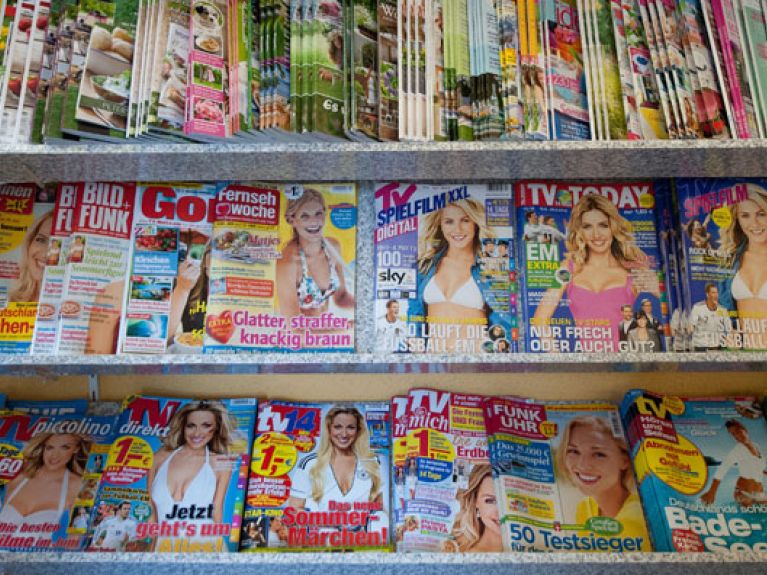Magazines in Germany
Readers can choose between thousands of titles on the German magazine market. And publishers are occupying more and more new niches

The German magazine market is a market of superlatives. The number of popular and special interest periodicals alone is counted in the thousands. No matter whether for dog owners, travel enthusiasts, the politically interested, coin collectors or teenagers, there is a magazine title tailored to practically every kind of special interest. These are also joined by the big weekly magazines such as Der Spiegel or Stern which have circulations measured in millions and focus attention on new topics and influence public debates in German society. The extent to which the magazine medium is part of everyday life in Germany is demonstrated by its reach: 93.5%.
The magazine landscape is characterized by several large players and a multitude of smaller publishing houses. Which is actually the largest depends on the statistics used to compare them. Hamburg-based publishing house Gruner+Jahr, part of the Bertelsmann Group, has a turnover of 2.77 billion euros and refers to itself as “Europe’s largest magazine publisher”. However, circulation analyses rank Burda Verlag (turnover: 1.79 billion euros) as the top German publisher since it reaches 51% of Germans above the age of 14. In the circulation ranking, Gruner+Jahr only comes fourth with 33.4%, behind Springer (48% turnover: 2.72 billion euros) and Bauer (47.7%, turnover: 2.23 billion euros).
These differences can be explained in part by the fact that publishers like Bauer and Burda largely earn their money with low-cost, weekly publications such as TV listings (TV Spielfilm, Burda; TV Movie, Bauer) and women’s and teenagers’ magazines (Bunte, Bravo). Gruner+Jahr is known in the same market segment for expensive periodicals such as Brigitte, Neon and Geo. The Axel Springer AG, on the other hand, makes more turnover with its newspapers, but continues to own a number of traditional publications such as the television magazine Hörzu and is well-established in the music magazine sector (Rolling Stone, Musikexpress). Additionally, all four publishers now earn a high percentage of their revenues abroad. Special interest publishing houses have also very successfully established themselves on international markets – for example, Motor Presse Stuttgart. The publishing group publishes more than 150 magazines in the fields of motoring, lifestyle, sport and leisure.
The market is currently in a state of flux and like all industries has been affected by the financial crisis. In the first half of 2009 total advertising revenues of German consumer magazines declined by 15.6% to 1.7 billion euros. Circulations have also fallen – by 1.8% compared with the previous year. The strategies being used by many publishers to combat declining circulations are very similar: they are attempting to gain the attention of both readers and advertisers with unusual new ideas – with some degree of success. Among other things, this is demonstrated by the success of the alternative lifestyle magazine Landlust. Produced by a small independent publisher in Münster, the magazine has been able to increase the number of copies sold from 200,000 in 2007 to almost 550,000 now. At the present time, Gruner+Jahr is most actively trying out new niche products on the market – for example, Beef!, a cooking magazine for men. Creativity remains one of the hallmarks of German publishers.

